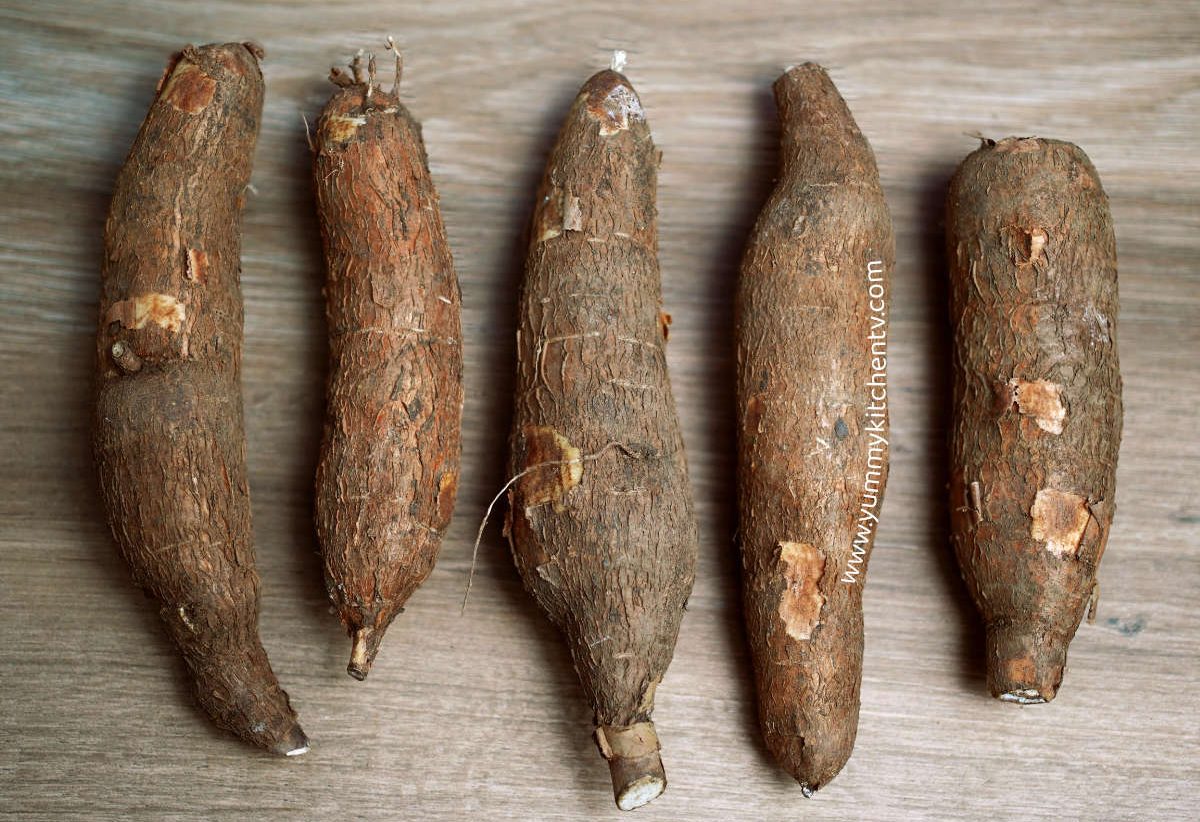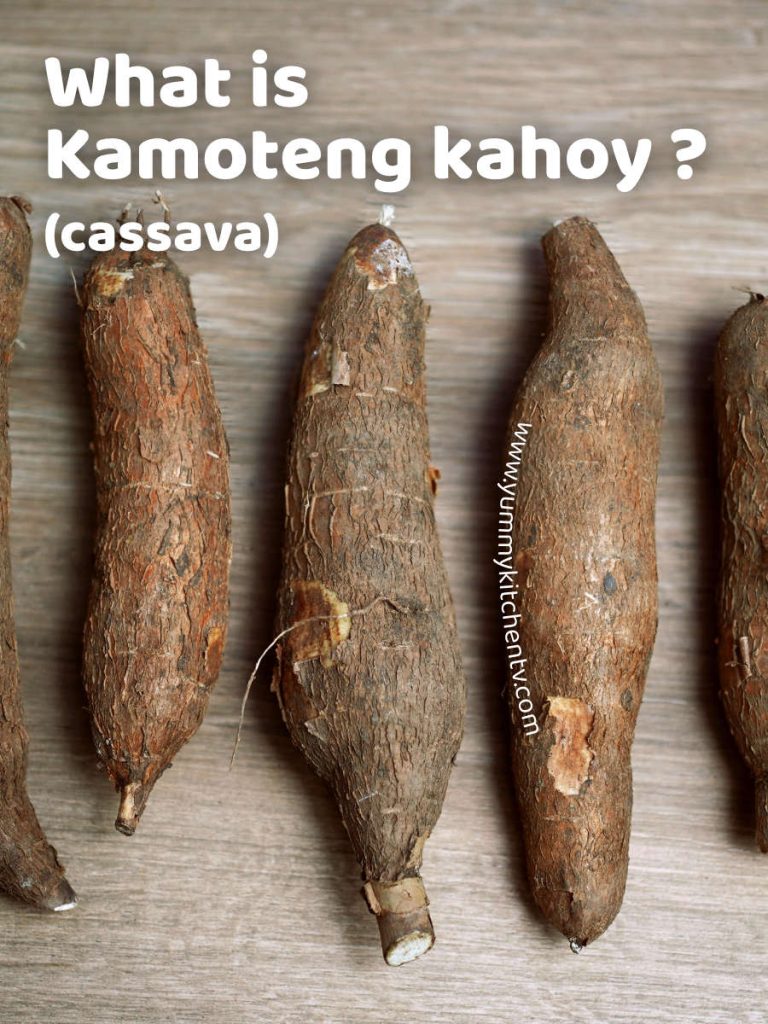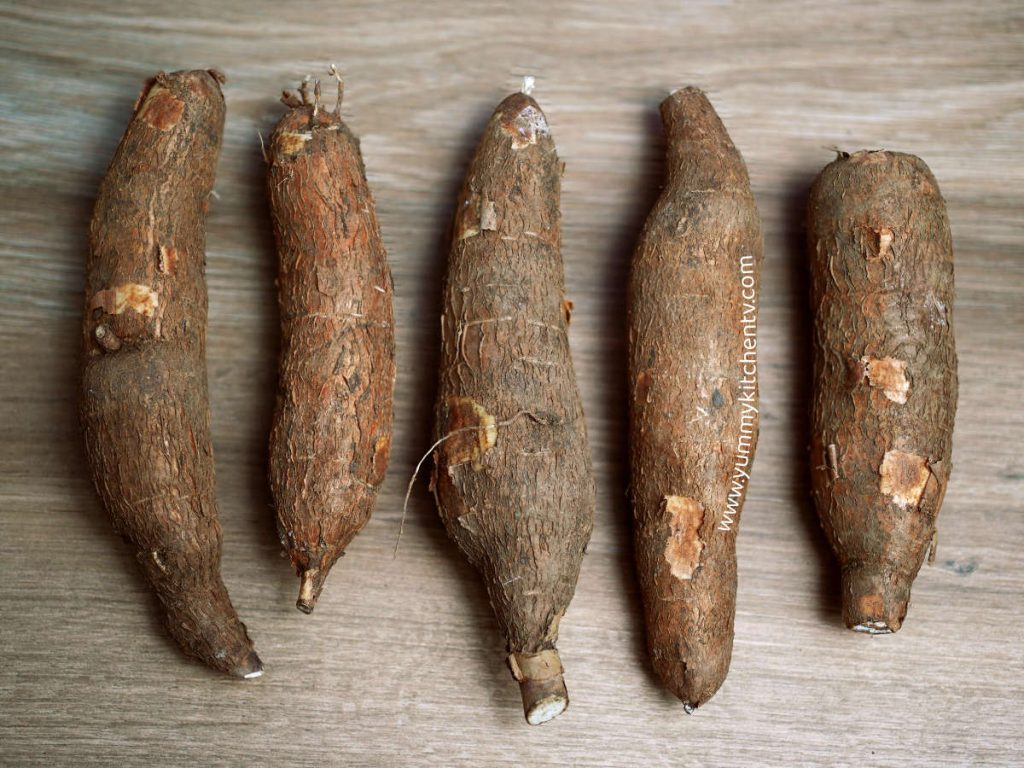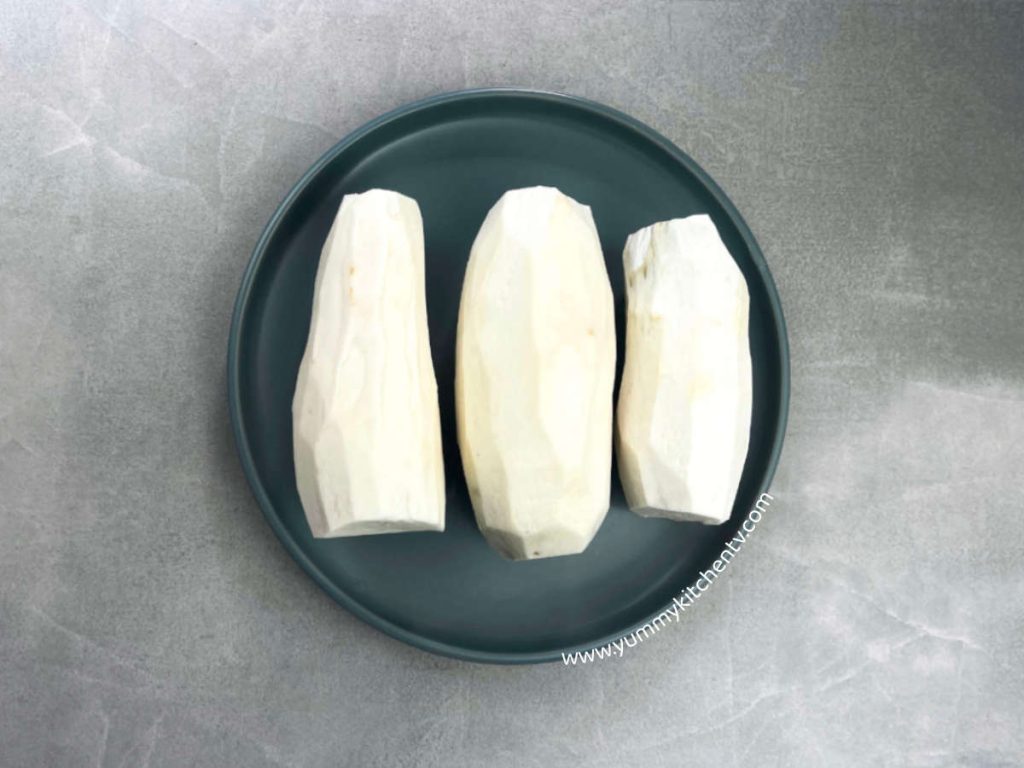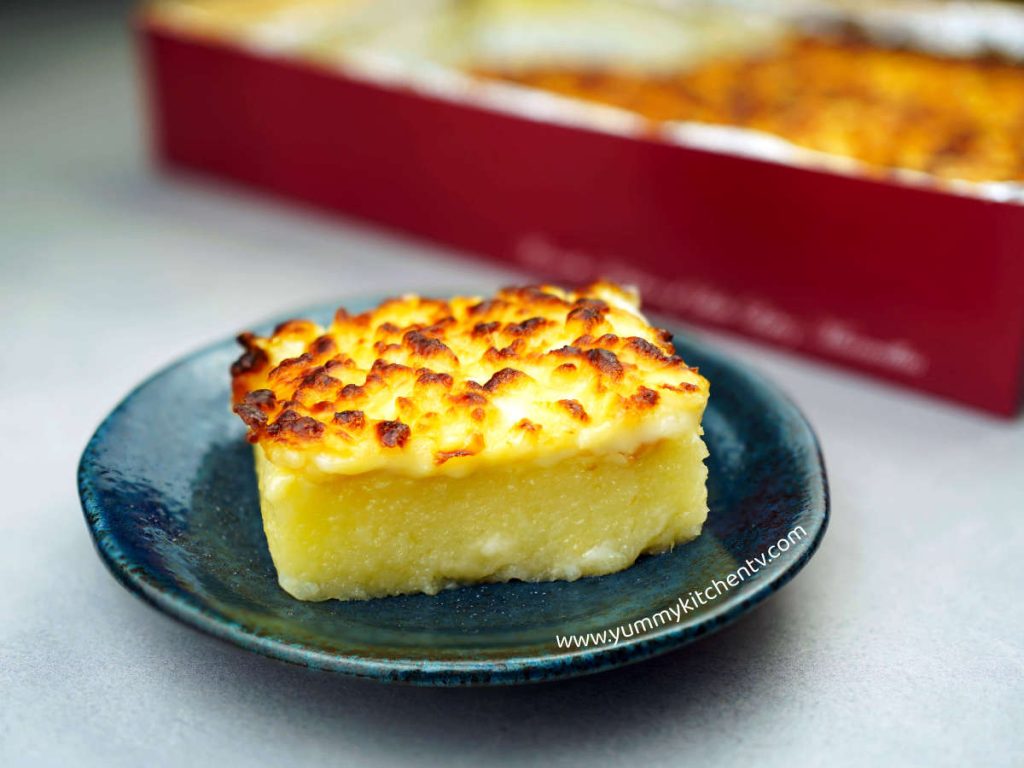What is ‘Kamoteng kahoy’ ( or in English, Cassava) ? A root vegetable that’s popularly added into many diets worldwide, especially in the Philippines and South America. An annual crop also known as tapioca or manioc root, an affordable and easy way to take in healthy calories and a number of nutrients. These are eaten steamed, fried, baked, made into powder to use for other traditional and modern recipes. An essential tuberous root to many countries and households, read this article to find out why Cassava such an important starchy root crop and what can you make out of this humble tuber?
A Short Introduction
Cassava or called the scientific name ‘Manihot esculenta’ is similar to yams, potatoes, and sweet potatoes, this root vegetable was once grown along the banks of the Amazon River, resistant to drought and does not require much fertilizer. The cassava plant was cultivated and consumed a thousand of years before Christopher Columbus first landed. Back then the cassava was eaten from the leaves, to the crop, and even its roots. While there are some cultures that do still cook these into an edible dish, you’d usually find only the cassava itself sold and eaten.
A nutty and starchy root vegetable is native to South America, Thailand, Nigeria, Indonesia, and the Philippines. In the west, it’s commonly called Brazilian arrowroot, manioc, or yuca. A woody shrub that was brought around the world by the Spaniards who occupied the Caribbean, then from Portuguese traders to Brazil at around the 16th century, then to Asia through the Columbian Exchange by the Spanish and Portuguese. These have a number of sweet and bitter varieties, cooked and then eaten boiled, added to soups, stir-fry, or grounded into cassava or tapioca flour and starch, which is then used to make gluten free dishes. Part of many dietary regimens call the cassava the ‘bread of the tropics’, to this day it remains one of the most essential crops worldwide to many not only because of its affordability but for its versatility and ability to satiate many.
Health Benefits of Kamoteng kahoy’ (Cassava)
Widely consumed around the world, these are to be eaten cooked and may be poisonous if eaten raw. A significant source of carbs, vitamins and nutrients, add this starchy veggie into your diet and see just how much it can help benefit the body.
- Contains resistant starch that has similar properties to that of fiber. These are great for those who want to improve their gut health, and reduce risk for type 2 diabetes.
- A good source of collagen that keeps the skin from sagging, strengthens bones, muscles and joints.
- Protects the liver and repairs the kidney. It has a healthy amount of creatinine and magnesium that helps reduce the risk of liver cancer and restore kidney function.
- Is rich in Vitamin C, providing the body with immunity.
How is Cassava eaten in the Philippines ?
The Casava or ‘Balinghoy’ or ‘Kamoteng Kahoy’ plant as it’s known in the Philippines. Is used as a sweet yam added to most of the traditional dishes that are still made today. A versatile dish that had fed hundreds of people, and are one of the most prized and fundamental food that not only fills you up, but is enjoyed to the fullest. Here are some Kamoteng kahoy recipes:
- As french fries or alternative to potato chips. These are made and eaten worldwide, similar with french fries but with the added health benefits.
- Kamote Cue, similar to that of french fries but thicker and sometimes dusted with or fried with brown sugar. Making it have a nice crispy outer shell, revealing a soft fluffy cassava once you take a bite.
- Cassava cake or cassava balls, a deliciously filling snack or dessert if made correctly will leave you addicted. The cassava balls are sometimes tinted with food coloring to make it more festive, while the cake is a mix of all things indulgent like butter, condensed milk, evaporated milk and coconut milk.
- Cassava karioka, an easy to do treat that looks like a fishball but feels like a chewy cake made by just mixing grated kamoteng kahoy and sugar, fried and sometimes dusted with more granulated sugar.
- Cassava Suman, (kamoteng kahoy suman) a variety of the regular suman, made by adding the grated tuber and young coconut meat.
- Puto Lanson, a native puto variety in Visayas, is a simple dish made by steaming grated cassava and brown sugar.
- As tapioca flour, it makes desserts like traditional black kutsinta, the ever popular tapioca pearls (boba).
- Pichi Pichi, a Filipino dessert made of grated cassava and coconut, with sugar and water to mix into a batter, cooked and topped with grated cheese. Making a sweet and savory combo you didn’t think would go so well but does!
A high calorie vegetable, making it a staple crop for many countries, cooked by many as a side dish, snack or even eaten for breakfast for a balanced diet. These should be noted that the cassava should be eaten in moderation. Even though these are a good healthier alternative to other high calorie foods, do keep in mind that consuming more calories than what you can usually burn may result in weight gain.

